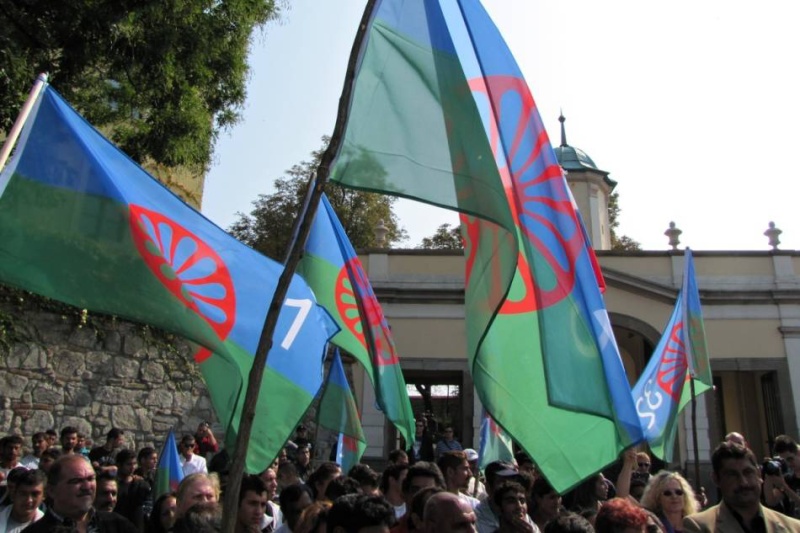Despite many challenges and predictions of failure, the House of Saud has managed to maintain its dominant position in the contemporary political order of Saudi Arabia for more than eight decades. Ideological dynamics have been instrumental in shaping the Saudi political order, especially with respect to the complex relationship between the ideology of Hanbali-Wahhabism and the House of Saud. Hanbali-Wahhabism has been a double-edged sword for the regime, being a source of both stabilizing and destabilizing factors. Apart from ideology, the Saudi political order has been preserved through a combination of continuous monopolization of coercion, external partners and a rentier economy.
Introduction
The aim of this essay is to examine the relationship between ideology and continuity of a political order by scrutinizing the case of Islamist Saudi Arabia, in which Hanbali-Wahhabism has shaped the preservation of the House of Saud’s domination over the Kingdom of Saudi Arabia. First, this essay discusses concepts of ideology and political order, as well as establishes an analytical framework that forms the basis for assessing the role of ideology in the case of Islamist Saudi Arabia. Second, the essay introduces the ideology of Hanbali-Wahhabism by assessing its key tenets, positing it as a major tool in the state formation of the modern Saudi Arabia and as a considerable component that has shaped the Saudi political order. Additionally, the second part scrutinizes the character of political order in Saudi Arabia by assessing the roles and power relations of key actors, including the king, the Al Saud, ulama and external actors. Third, the essay analyzes the role of Hanbali-Wahhabism in preserving the political order in Saudi Arabia dominated by the Al Saud by examining state-society relations, the role of hydrocarbons and external actors. The third part also assesses challenges to the existing political order that have primarily been based on Islamic narratives, as well as responses from the state to given challenges based on the mix of coercion, co-option and ideological discredit.
The essay argues that ideology considerably shapes a political order by providing an indispensable role in the beginning of a state formation, consolidation and subsequent maintenance of the status quo. Conceptualized in this way, ideology offers a number of enabling characteristics that help to embed and preserve a given political order, including a unifying factor, a legitimizing factor and a protective factor vis-à-vis opposition groups. However, a given ideology also becomes the source of contestation, thus negatively affecting established political orders. Opposition groups may base their challenge on a rival ideology, or a different interpretation and application of an already existing ideology. Regarding Hanbali-Wahhabism in Islamist Saudi Arabia dominated by the Al Saud, the tribal-religious Saudi-Wahhabi alliance was crucial in establishing, unifying and consolidating the contemporary state of Saudi Arabia and has since played a considerable role in shaping the political order. The official state-backed version of Hanbali-Wahhabism has helped to legitimize and protect the Saudi monarchy and existing power relations during the periods of stability, as well as in times of crises. Despite a pan-Arab challenge in the middle of the 20th century and several challenges grounded in Islamic narratives, the existing political order has been preserved. However, it would be an analytical flaw to consider the Hanbali-Wahhabi ideology as the sole factor in preserving the political order in Saudi Arabia. The essay argues that apart from ideology, the Al Saud has also relied on coercion, co-option, oil rents and strategic partnerships with powerful external actors to preserve the political order.
Ideology and political order
Ideology is a contested concept that divides social scientists due to its complexity and vagueness (Dijk 1998: vii). However, this essay conceptualizes ideology in a number of ways. First, ideology is a political nexus of power, knowledge and normative order that structures the way of how state-society (polity-society) relations should be organized on a domestic level. Apart from the state level, ideology also has sub-state and international implications, for example, it can be exported, or it can interact with other ideologies. Second, it is an “evolutionary and flexible set of political principles and values that inform and guide” (Gani 2014: 15, emphasis original). Thus, ideology is constructed and reconstructed and may change over time to accommodate emerging political realities. The key issue in evaluating the role of ideology is to understand how and why it emerged, what its basic tenets are and how it is (re)shaped based on specific political, social and economic configurations. At the same time, group, institutional and organizational dynamics should be taken into account to consider the role of power, dominance and reproduction of ideologies (Dijk 1998: 135). There is a degree of ambiguity in ideologies: on the one hand, ideologies are often constructed as universal and on the other hand, they are a source of various interpretations from within. Ideologies also depend on social co-option and they politicize social, cultural and economic spheres (Gani 2014: 16).
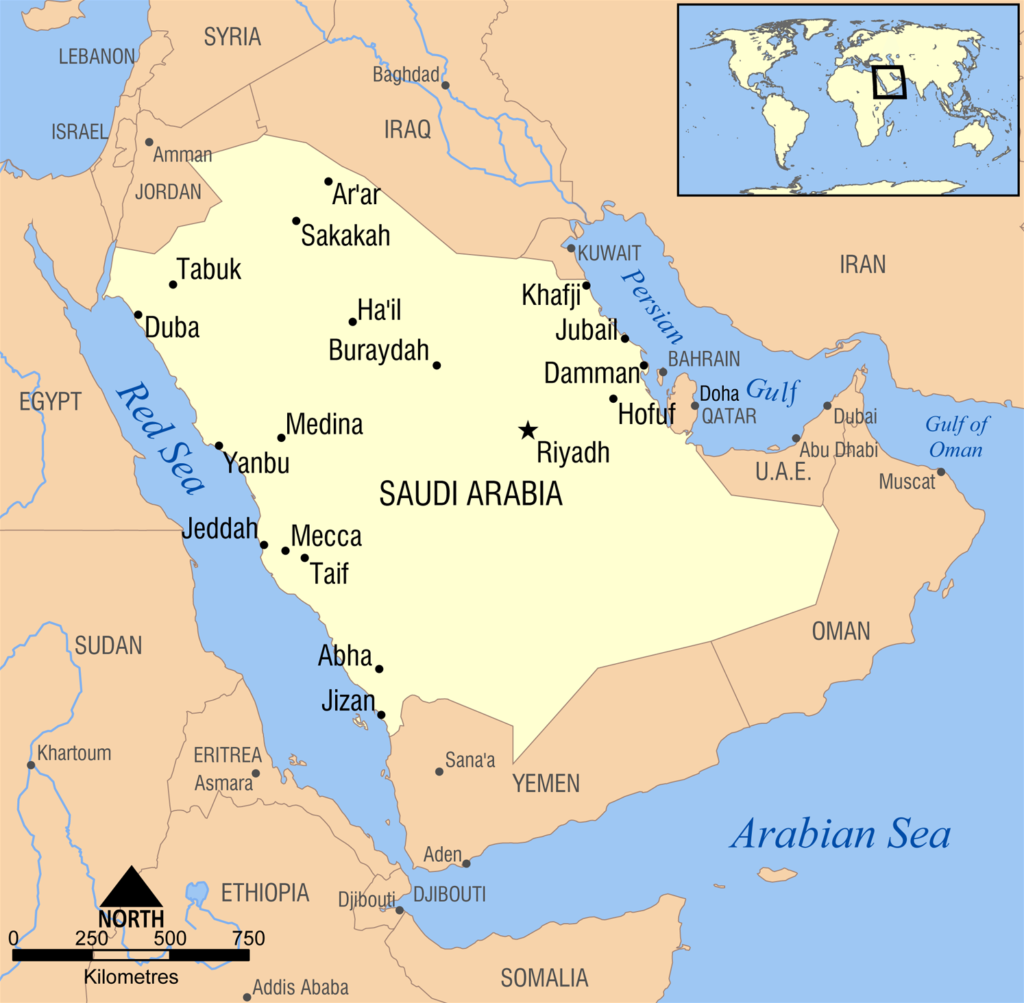
Regarding political order, it is a set of political arrangements that structures and regulates relationships between political actors within a demarcated territory. Historically, political orders have been rather fluid phenomena, but some key characteristics for preserving a political order may be inferred. According to Fukuyama (2012, Chapter 29), political orders consist of three key pillars: institutions, the rule of law and political accountability. Thus, there is a positive relationship between the strength of the three pillars and the preservation of a political order. However, considering different regime types, Fukuyama’s typology might be questioned, because of their specific liberal democratic inclination, especially regarding the rule of law and political accountability. For this reason, it is more appropriate to consider power relations within a polity, assessing who and how governs, on what basis, and to what extent are the governing actors able to reproduce an existing political order. Due to the prominence of state as a key legal-territorial unit in the modern era, this essay focuses on a political order in the context of the territorial state.
Ideologies and political orders are intertwined phenomena, whereby the primary aim of ideologies is to help to create, consolidate and preserve political orders embedded in a proto-state and later a state unit. Ideologies offer a number of enabling and preserving characteristics that are beneficial for political orders during their entire cycle since formation up until dissolution. First, ideologies, based on their unifying and universalizing aims, assist in mobilizing social groups and political actors by offering a constructed narrative of commonality and rightness. This narrative then provides justification for actions taken by actors aspiring to possess power and later the governing elite. Once in control of state institutions, political actors, wielding the greatest amount of power employ the dominant ideology that allowed them to capture the state to preserve their position and fix political order. Second, ideologies provide a degree of legitimacy to political orders, ensuring social acceptance of a governing entity’s right to rule. The legitimizing function of ideologies ensures stability and continuity in state-society relations, thus contributing to the maintenance of the status quo. Third, ideologies are reproduced and employed by power wielders of existing political orders to offer a protective function vis-à-vis challengers to their established position of dominance. They are “protective belt in time of crises” and can be channelled both internally and externally (Rubin 2014: 28).
However, given the ambiguity of ideologies, they can also become a source of contestation, thus challenging, disrupting, and even replacing established political orders. Apart from the protective function outlined in the previous paragraph, ideologies might be employed strategically and aggressively by various political actors seeking to reshuffle, or undermine existing networks of power relations. The dominant ideology of a political order may be challenged either from within itself or externally by a rival ideology of a different character. In the former case, challengers of the dominant ideology base their claim on the perceived inauthenticity and corruption of the established ideology, thus seeking to reshape it to its ‘authentic’ form. In the latter case, an external ideology derived from external challengers claims superiority over the dominant ideology of a political order and aspires to replace the existing ideology. In this case, an ideological shift is accompanied by a relatively considerable change in political order.
It would be an analytical flaw to disregard other factors that preserve political orders. Even though examining the role of ideology is the main focus of the essay, it alone offers a partial, albeit significant picture in explaining the persistence of political orders. This essay considers three other factors that have a high impact on the maintenance of political orders: the degree of alignment between a security apparatus and a political order, the degree of acceptance within a given society with respect to its political order, and the degree of support a political order enjoys by powerful external actors. Although ideology might to some degree play a role in the three listed factors, material and pragmatic considerations should be taken into account. Regarding the first factor, a security apparatus that is clearly institutionalized, interconnected with a political order and accepts its role as a guardian enhances preservation of the status quo. With respect to the second factor, an assumption can be made that greater acceptance of a political order within society produces less opposition and consequently less challenge for an existing political order. With regard to the third factor, powerful external actors can aid political orders in dealing with their challengers, as well as support a shift in existing political orders. Having discussed the key concepts and the analytical framework, this essay subsequently proceeds with assessing the role of ideology in preserving the political order in Islamist Saudi Arabia.
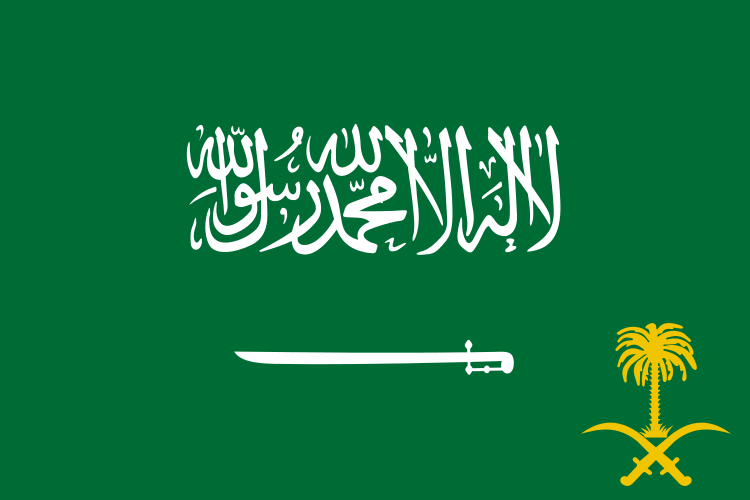
Islam, Hanbali-Wahhabism and the Saudi political order
Islam has played a key role in forming and preserving the contemporary unified state of Saudi Arabia declared in 1932. Islam as a religion is not homogenous, it is fluid and open to interpretation. At the same time, Islam does not necessarily translate into an ideology per se, unless it is reshaped, acquiring explicitly political narratives and aims. The politically reshaped form of Islam, or Islamism, refers to “the instrumentalization of Islam by individuals, groups and organizations that pursue political objectives” (Denoeux 2002: 61). Political actors reinvent or reappropriate Islamic referents drawn from an ‘Islamic tradition’ to construct a particular Islamist ideological narrative that offers guidance and is linked to the dimensions of political power and normative order. In the case of Saudi Arabia, the essay considers that it is Hanbali-Wahhabi Islamist ideology (Ayubi 2006, Mouline and Rundell 2014), even though the term Wahhabi espouses negative connotations and the Saudi establishment presents itself with the Salafi label (Commins 2015: 162, Ménoret 2005: 54). However, as was mentioned in the previous part of the essay, ideologies are flexible and evolutionary. Therefore the label of Hanbali-Wahhabism serves as an analytical and simplifying tool, rather than a unifying uncontested term that captures the ideological reality in Saudi Arabia over time.
The political order of the modern Saudi Arabia has been centred on the dominance of the Al Saud, evident in the name Saudi Arabia itself, whereby the nucleus of power is ‘all in the family’, reflected in the character of the regime as a dynastic monarchy penetrated by neo-patrimonialist ties (Herb 1999: 8). Political power has effectively remained in the hands of the Saudi royal family that has to a large extent successfully coerced, or co-opted several key social organizations, traditionally possessing a non-negligible amount of power, such as tribes, business captains and ulama (Al-Yassani 1985: 81). The ruling family monopolizes key state institutions, crucially the most powerful office of the king (merged with the premiership in 1964) and the three security ministries, namely the Ministry of Interior, the Ministry of Defence and the Ministry of the National Guard, thus ensuring the family’s monopolization over the means of coercion. Aside from the monopolization of coercion, the Saudi regime has been successful in the monopolization of economic structure of the state, dependent almost exclusively on oil rents since the 1970s. The oil revenues have increased political and financial autonomy of the Saudi-centred state, demobilizing socio-economic forces and ensuring business reliance on the state (Saouli 2009: 151-167). Saudis have also relied on powerful external partners, mainly the UK at first and later the US, whose strategic interests in controlling oil resources of the Middle East have often converged with the Saudi regime. However, the above factors and characteristics form only a part of the explanatory framework and should be enriched by a vital factor of the Hanbali-Wahhabi ideology’s role in the political order of Saudi Arabia.
Although scrutinizing Hanbali-Wahhabi theory, theology and tenets is beyond the scope of this essay, a brief overview of relevant contexts helps in providing an argumentative ground for further analysis. Hanbali-Wahhabism has been a dominant ideology in Saudi polities since the establishment of a symbiotic relationship between a Najdi tribal leader Muhammad ibn Saud and a Najdi Sunni preacher Muhammad ibn Abd al-Wahhab in 1744 that “continues to play a central, if sometimes uneasy, role in the contemporary Saudi polity” (Ulrichsen 2011: 63). This relationship reflects the merging of religious and political spheres into an Islamic polity, in which the political order is defined in Islamic terms and the government’s source is shari’a (Islamic law). However, the inseparability of religion and state (polity) has been a consistent feature of both traditional and modern Muslim scholarly works, thus it is by no means an utterly novel approach (Al-Atawneh 2009: 725). In fact, one of the major intellectual sources of the Wahhabi movement was Ibn Taymiyya, a prominent Hanbali scholar of the 14th century, positing the umara (temporal rulers) and ulama (religious scholars) as the two governing pillars, in which the former were responsible for ensuring security and internal order, and the latter in charge of teaching, upholding moral values and interpreting the shari’a (Kostiner 1993: 73). According to Mouline and Rundell (2014: 62), Muhammad ibn Abd al-Wahhab was “not a great intellectual … far from being an innovator … [he] only adapted and simplified classic Hanbali doctrines in the service of his religious ideal”. What distinguished Ibn Abd al-Wahhab’s approach from classical Hanbalism was his ‘messianic’ approach, in which
“he claimed that the True Religion had been perverted by the heterodox beliefs and practices of his contemporaries. Energetic action was thus necessary to reform and restore it. … Ibn Abd al-Wahhab claimed to possess the truth and, in that measure, access to the path of eternal salvation” (Mouline and Rundell 2014: 62).
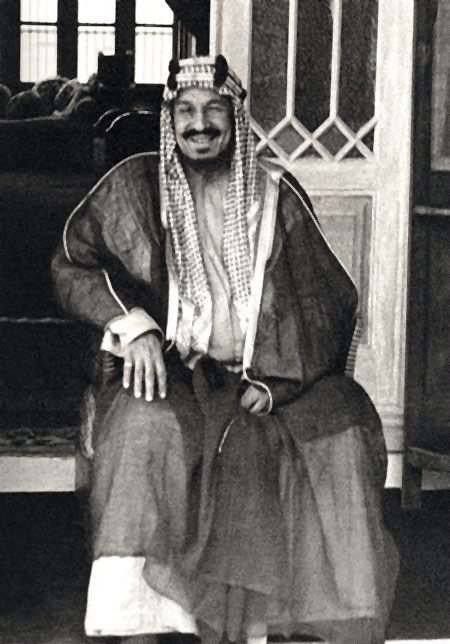
Saudi coercive power and Hanbali-Wahhabi ideational power complemented each other, providing a pivotal force in the formation and establishment of the three Saudi polities, the last being the contemporary state of Saudi Arabia. The relationship between Saudis and Hanbali-Wahhabi ulama has been mutually constitutive, though with a dividing line separating the two. According to Saouli (2009: 144), when “these boundaries have been crossed by one actor a crisis ensued. Several instances, nevertheless, reveal that the political regime had the upper hand in solving the crises”. Having discussed the basics of ideology and political order in Islamist Saudi Arabia, the essay subsequently proceeds with an analysis of the Hanbali-Wahhabism’s role in preserving the Saudi-centred political order in Saudi Arabia (the third Saudi polity) established by Ibn Saud.
The role of Hanbali-Wahhabism in preserving the Saudi political order
Hanbali-Wahhabism has considerably shaped the modern political order in Saudi Arabia, being a source of enabling and preserving processes that have helped to preserve the Saudi-centred political order for more than eight decades. Hanbali-Wahhabism has played a key role in unifying, universalizing and mobilizing society; legitimizing the Saudi domination and protecting the political order from challenges. These processes have not necessarily been separate, but rather interconnected, forming a part of the Al Saud’s survival package. However, the state employed version of Hanbali-Wahhabism has also produced a number of opposition groups since the state formation in the beginning of the 20th century up until the current era of the 21st century, with a varying degree of power to challenge the existing political order.
Regarding the unifying, universalizing and mobilizing role, it is vital to analyze the process of state formation, state-society relations and the use of Hanbali-Wahhabi discourse to provide common frames and narratives, especially evident in the education sphere. Hanbali-Wahhabism effectively established the primacy of the Al Saud over other tribes and families in the Arabian Peninsula, investing them with “a historical mission: to achieve the unity of the peoples of the Peninsula, just as Abd al-Wahhab’s movement had achieved divine unity in thought” (Ménoret 2005: 51). A political space in the Peninsula before the establishment of the current Saudi state was fragmented, with a number of tribes often competing with each other. However, the Saudi forces led by Ibn Saud were able to conquer the territory and confiscate the land of the defeated tribes, turning them into ‘state’ lands. As was discussed in the previous part, apart from Islam, Hanbali-Wahhabism is centred on politics, espousing some essentialist dimensions that assist in positing it as a mobilization tool relying on a ‘supra-tribal ideology’, such as compulsory zakat, obedience to the ruler and jihad (Saouli 2009: 127-136). The universalizing character of Hanbali-Wahhabism helped to integrate different identities and ensured loyalty to Ibn Saud, “who needed a religious rationale for his military expansion, understanding very well that nomads could not be subjugated for long by force or by money”(Ayubi 2006: 129). The process of the Saudi state formation assisted by Hanbali-Wahhabism has played a considerable role in preserving the Saudi political order, reflected in the conceptualization of state-society relations and unified discourse.
With respect to state-society relations, Hanbali-Wahhabism structures the way of how they should be organized. State and regime distinction is blurred, with a clear domination of the Al Saud in the political sphere, especially evident in the institution of the Saudi king. Hanbali-Wahhabism stipulates that the Saudi society is tied to the monarchy by a juridico-religious contract, the bay’a. According to Mouline and Rundell (2014: 240), “in keeping with this pledge of allegiance, the Saudis owe obedience and assistance to the king”, as long as he observes shari’a. However, an open rebellion against the rulers, the Al Saud, is forbidden and any opposition must be done through a non-confrontational reasoning (Al-Atawneh 2009: 728). Aside from a clear superiority of the Al Saud, the relationship is also structured around a sense of pride, exceptionalism and a social contract. The social contract between the king and his subjects presupposes mutually reinforcing and fixed positive qualities, such as love, brotherhood, mercy, justice, or respect that appear as ‘natural’ (Al-Rasheed 1996: 370). The sense of pride and uniqueness within the society is constructed around the fact that the Al Saud controls the holy cities of Mecca and Medina, as well as staggeringly high hydrocarbon reserves used for the general benefit of the people, offering the regime a narrative of a Godly blessing and His favour for the regime. This creates a narrative of the common Saudi identity manifested in the unified Saudi state as a pivotal Islamic actor. However, the Basic Law explicitly states that all natural resources “shall be the property of the State”, in other words, the property of the Al Saud (in Haykel 2015: 134).
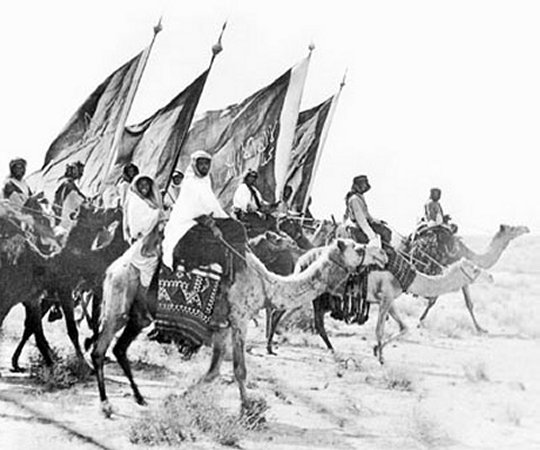
The education sphere plays a large role in reinforcing dominant ideologies, because institutions of schooling controlled by the state perform a socializing function since childhood. In the case of Saudi Arabia, children are indoctrinated from an early age with a fixed Hanbali-Wahhabi ideological discourse, emphasizing the centrality of the Al Saud and preservation of the status quo. The school curriculum reflects the Hanbali-Wahhabi worldview: “a world divided into believers and preservers of the true faith and the infidels … project[ed] … in the demonization of everything different” (Prokop 2005: 65). Thus, children are not exposed to divisions within Islam and are actively made to believe in the dominating and homogenizing Hanbali-Wahhabist ideology to ensure loyalty to the regime, in a society partly divided by regional, tribal, or religious attachments. For example, Shia are denied teaching positions, which have increasingly become monopolized by Hanbali-Wahhabi teachers adhering to the regime sanctioned ideology without any alternative view (Doumato 2003: 243). At the same time, history books emphasize the history of Saudi Najd, ignoring other regional histories and narratives, as well as secular dynamics in the Arab/Islamic world (Prokop 2003: 81). The historical narratives of the Saudi state are constructed around particular representations of unification that bind rulers and the ruled through Hanbali-Wahhabi ideology, portraying the Al Saud as “a hegemonic force in the history of the country” and “at the heart of establishing order and stability” (Al-Rasheed 2010: 183, 187).
With respect to the legitimizing role of Hanbali-Wahhabism, it is necessary to consider the dynamic between ulama and the Al Saud. Due to the prominence of ulama-umara bond in the Hanbali-Wahhabi ideology that permeates the society of Saudi Arabia, ulama and the Al Saud constitute the two major pillars of the system. Despite some limited rifts, ulama have largely become a pragmatic force without political aims, co-opted by the Al Saud, engaging mostly in educational and theological debates relating to orthopraxy and jurisprudence (Al-Rasheed 2005: 193). Although, the overall legitimacy of the Saudi political order is based on various strands of legitimacy, mainly ideological, traditional and eudemonic legitimacy and to an extent personal and structural legitimacy (Niblock 2006: 10-13), over time, ulama have played a considerable role in ensuring the overall legitimacy, mostly evident in the ideological sphere. However, as was discussed earlier the Al Saud has had an upper hand over ulama, incorporating them into religious, judicial, or educational state institutions. Aside from political primacy, the king also claims religious authority on the basis of his titles as imam al-wahhabiya and shaykh al-mashayikh (Nevo 1998: 45). The mutually reinforcing religious and political authority of the king, as well as the Al Saud’s hereditary right to rule is reproduced and legitimized by a direct support from the state ulama. Moreover, shari’a as the infallible law of God, superior to umara that implement it and ulama that clarify it provides a divine justification, constructed as the supreme legitimizing factor for preserving the status quo.
Regarding the protective role, Hanbali-Wahhabism has helped to discredit rival ideologies and political movements challenging the status quo and affirm the central position of the Al Saud. In times of crisis, the regime relied on the strengthening of Hanbali-Wahhabi influence over Islamic curriculum, and even inviting the ‘non-indigenous’ Muslim Brotherhood during the 1960s to counter the Arab nationalist challenge (Lacroix 2015: 169). Thus, the regime has been able to actively shape the production of counter-narratives and discredit its challengers, using even an Islamic package of non Hanbali-Wahhabi ideas. Although there have been rifts both within the royal family and within ulama, a pragmatic approach has repeatedly had an upper hand, shielding the regime during three major periods of political mobilization, crucially 1979-90, 1990-94 and in the post-9/11 period (Gause III 2015: 17-24). The pragmatic state sanctioned version of Hanbali-Wahhabism, in theory, should affirm the unrivalled position of the Al Saud and the king in Saudi Arabia and dictate ulama an unequivocal support of umara in major political decisions. Additionally, ulama have an interest in maintaining the Saudi regime due to the fear of state collapse, which would likely disrupt their prominent position as a key Islamic actor. Thus, ulama have a major role in preserving the religious feature of the state and in political validation of the regime’s decisions (Al-Atawneh 2009). Since the time of Saudi Arabia’s state formation, Hanbali-Wahhabi ulama co-opted by the regime have defended it from ideological challenges, despite several instances, in which they disagreed with the king. For example, historically ulama had been among the first to reject the influx of foreign influence, but with regard to the US presence in Saudi Arabia during the Gulf War, “they explicitly endorsed the King’s decision” by issuing a fatwa defending the US presence (Steinberg 2005: 30).
Ideological challenges to the Saudi political order
As was discussed, Hanbali-Wahhabi has been in many instances helpful in preserving the political order in Saudi Arabia. However, given the ambiguous character of ideologies and religions, they not only serve as instruments of maintaining, or strengthening the political order, but also as a source of dissent and contestation. Opposition groups might seek to reshape or outright challenge and rebuild existing political orders by employing external ideologies, or reinterpreting existing ones. Aside from external ideologies not based on Islamic narratives, the regime has been challenged by ideologies based on Islam, as well within Hanbali-Wahhabism itself due to the monopolization and instrumentalization of Hanbali-Wahhabism by the Al Saud.
With respect to the latter, Hanbali-Wahhabism had initially been used as a unifying tool in the process of state formation in the early 20th century, but later turned into a split between forces loyal to Ibn Saud and Ikhwan, “with both parties basing their claims on Islamic practices sanctioned by the Wahhabi tradition” (Kostiner 1993: 188). In 1930, Ibn Saud ended up victorious through military confrontation rather than with a unified support by ulama. Another case from within the Hanbali-Wahhabi tradition was a seizure of the Grand Mosque of Mecca led by a religious neo-Ikhwan zealot Juhuaiman al-Utaibi. His group harshly criticized the Al Saud “for their corruption, the oppression of the population and their alliance with infidel powers, especially the United States” (Steinberg 2005: 27). Once again, the regime (with assistance from a French commando) used force and killed, or executed the rebels.
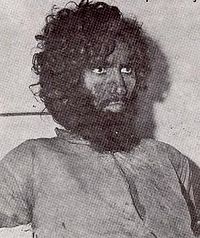
Although there have been endogenous non-violent Sunni movements challenging the prominence of Hanbali-Wahhabism, such as ‘islamo-liberals’ in the 1990s and 2000s seeking to minimally reshape the political order, they never openly challenged the king’s or the Al Saud’s central position in the system , even pledging allegiance to the Saudi family (Lacroix 2004: 360). Similarly, during a relatively violent period of the post-9/11 environment marked by terrorism on Saudi soil conducted by Al-Qaeda on the Arabian Peninsula, the challenge was more anti-US than anti-regime and with the lack of public support (Hegghammer 2008: 712).
During the existence of Saudi Arabia, the greatest ideological challenge to the monarchy was probably Khomeini’s revolutionary Shiism that threatened the very basis of the Al Saud’s legitimacy by using a mix of easily understood Islamic symbolism and anti-(Western) imperialism. Khomeini’s aim was to capitalize not only on Shia minority in Saudi Arabia, but also to activate a divisive component of identities to entice anti-regime hatred from within the partially fragmented Saudi society along tribal, regional and religious lines. He labelled King Fahd as “a traitor to God [,who] spends a large part of the people’s wealth every year on . . . publicizing the anti-Koranic, totally baseless and superstitious faith of Wahhabism” (quoted in Rubin 2014: 101). The regime responded with a 900% increase in allocation of resources to religious activities during 1980-1985 compared to the previous five-year period, as well as supporting the Islamist movements fighting in Afghanistan and claiming the title of the Custodian of the Two Holy Mosques for the Saudi king (Rubin 2014: 59, Niblock 2006: 84). Despite a number of ideological challenges to the political order, the regime has been successful in maintaining the status quo, with the addition of some limited reforms in the early 1990s, and during the reign of King Abdullah (Al-Rasheed 1996, Gause III 2015).
The role of hydrocarbons and external partnerships
Hanbali-Wahhabism has played a considerable role in preserving the political order in Saudi Arabia, but its importance should not be overstated. It has formed a part of the package intended to maintain the Al Saud’s domination, along with hydrocarbon resources and partnerships with external major powers. Regarding the former, Saudi Arabia can be conceptualized as a model rentier state, in which the bulk of the government’s revenue, monopolized by the Al Saud is derived from externally earned unproductive payments for hydrocarbons. According to Smith (2004: 232), “oil wealth is robustly associated with increased regime durability, even when controlling for repression, and with lower likelihoods of civil war and antistate protest”. The Al Saud engages in a rentier bargain, allocating a certain portion of the hydrocarbon wealth to society in exchange for domestic support, effectively boosting its eudemonic legitimacy (Noreng 2004: 12). However, an extensive oil extraction was not present in the beginning of the state formation and consolidation, resources might be (and often are) allocated unequally and the revenue is affected by fluctuations of the global oil market.
With respect to external partnerships, the role of the UK and the US in backing the Al Saud has been crucial at certain times. The UK directly helped Ibn Saud to consolidate the conquered territory and to form the Saudi state by supporting his forces by the Royal Air Force against the Ikhwan rebellion (Al-Rasheed 2010: 66). Over time, the importance of the UK in shaping Saudi affairs diminished and the Al Saud alliance with the US became more prominent. Due to a strategic importance of the Saudi hydrocarbon sector and the central role of oil for maintaining the global hegemony, the US-Saudi alliance has withstood despite several rifts (Hinnebusch 2011: 233). The US has helped to recycle the Saudi petrodollars in the global economy, as well as providing hard security assistance to the regime, for example, with boots on the Saudi ground during the Gulf War. Additionally, the US has continuously been assisting in training Saudi military personnel and selling large amounts of high-tech military equipment to Saudi Arabia (SIPRI 2016).
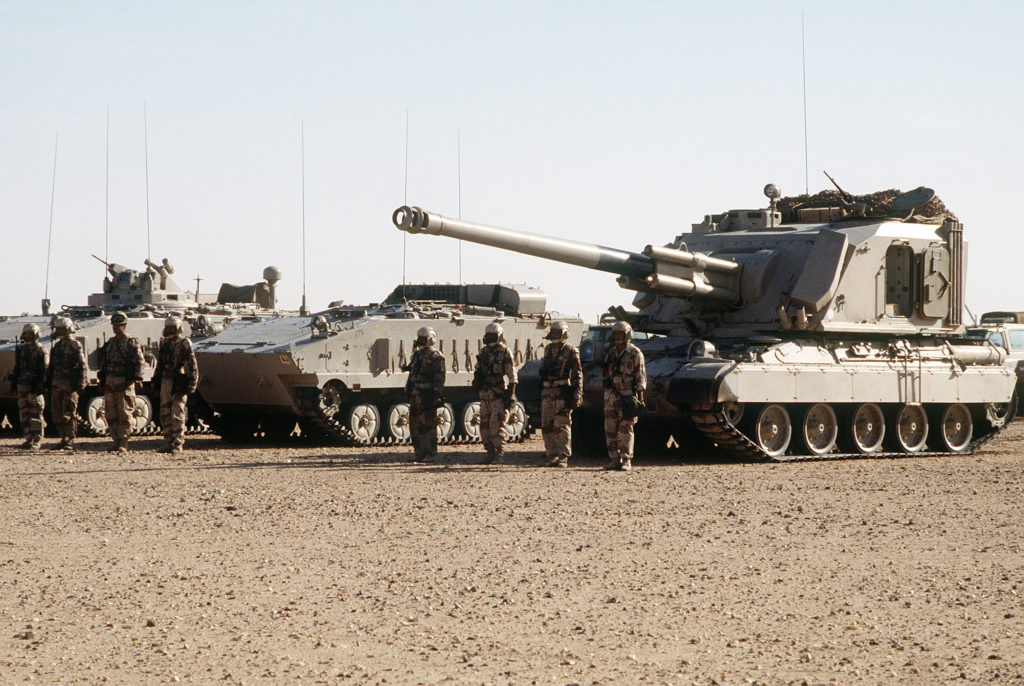
Conclusion
To conclude, ideology plays a significant role in shaping a political order throughout its phases of creation, consolidation and preservation, but also throughout its destabilization and dissolution. During the preservation phase, political actors that captured the state (polity) at the time of creation and consolidation phases by employing a particular ideology embed their power positions by instrumentalizing the dominant ideology that offers interconnected unifying, legitimizing and protective functions. The dominant ideology becomes entrenched in a political order, structuring state-society relations in a way to maintain the status quo. However, ideologies are flexible and may also be used to undermine political orders either through claims that challenge the dominant ideological authenticity or by external rival ideologies. Aside from ideology, there are three other key factors that preserve a political order, namely a support by powerful external actors, domestic societal acceptance, and an alignment between coercive institutions and an existing political order.
In the case of Saudi Arabia, the ideology of Hanbali-Wahhabism has considerably shaped a political order of the modern Saudi state centred on the domination of the Al Saud. The Hanbali-Wahhabi ideology has helped to preserve the Saudi political order by providing a unifying narrative of the Saudi exceptionalism, ensuring that the royal family and the institution of the king monopolize the central place within the modern state of Saudi Arabia. The prominent position of the Al Saud has been replicated, for example, through education and reflected in the school curriculum. Hanbali-Wahhabism has also acted as a legitimizing tool for the political order, empowering the king with both religious and political authority at the expense of other actors embedded in a particular interpretation of Islamic thought and Islamic law. Additionally, the state version of Hanbali-Wahhabism has been employed as a protective shield in times of crises, when the political order has been challenged either from endogenous ideologies, or through external ideologies. Thus, Hanbali-Wahhabism has been a double-edged sword, whereby the domination of the Al Saud and the state-sanctioned version of Hanbali-Wahhabism have also been attacked on the ideological basis. However, Hanbali-Wahhabism has constituted only a part of the survival package. Apart from ideology, the Saudi political order has been preserved through a combination of continuous monopolization of coercive means assisted by powerful external actors, chiefly the UK and the US, as well as through co-option of elites and the population due to vast hydrocarbon rents.
References
Al-Atawneh, M. (2009) ‘Is Saudi Arabia a Theocracy? Religion and Governance in Contemporary Saudi Arabia’, Middle Eastern Studies 45(5): 721-737.
Ayubi, N. N. (2006) Over-Stating the Arab State: Politics and Society in the Middle East (I.B. Tauris: London).
Commins, D. (2015) ‘From Wahhabi to Salafi’ in B. Haykel, T. Hegghammer and S. Lacroix (eds), Saudi Arabia in Transition: Insights on Social, Political, Economic and Religious Change (Cambridge: Cambridge University Press), 151-166.
Denoeux, G. (2002) ‘The Forgotten Swamp: Navigating Political Islam’, Middle East Policy 9(2): 56-81.
Dijk, T.A. (1998) Ideology: A Multidisciplinary Approach (Sage: London).
Doumato, E. A. (2003) ‘Manning the Barricades: Islam According to Saudi Arabia’s School Texts’, Middle East Journal 57(2): 230-247.
Fukuyama, F. (2012) The Origins of Political Order: From Prehuman Times to the French Revolution (London: Profile).
Gani, J.K. (2014) The Role of Ideology in Syrian-US Relations (Palgrave Macmillan: Basingstoke).
Gause III, F. G. (2015) ‘Oil and Political Mobilization in Saudi Arabia’ in B. Haykel, T. Hegghammer and S. Lacroix (eds), Saudi Arabia in Transition: Insights on Social, Political, Economic and Religious Change (Cambridge: Cambridge University Press), 13-30.
Haykel, B. (2015) ‘Oil in Saudi Arabian Culture and Politics: From Tribal Poets to Al-Qaeda’s Ideologues’ in B. Haykel, T. Hegghammer and S. Lacroix (eds), Saudi Arabia in Transition: Insights on Social, Political, Economic and Religious Change (Cambridge: Cambridge University Press), 125-147.
Hegghammer, T. (2008) ‘Islamist Violence and Regime Stability in Saudi Arabia’, International Affairs 84(4): 701-715.
Herb, M. (1999) All in the Family: Absolutism, Revolution, and Democracy in the Middle Eastern Monarchies (New York: State University of New York Press).
Hinnebusch, R. (2011) ‘The Middle East in the world hierarchy: imperialism and resistance’, Journal of International Relations and Development 14: 213-246.
Kostiner, J. (1993) The Making of Saudi Arabia 1916-1936: From Chieftaincy to Monarchical State (Oxford: Oxford University Press).
Lacroix, S. (2004) ‘Between Islamists and Liberals: Saudi Arabia’s New ‘Islamo-Liberal’ Reformists’, Middle East Journal 58(3): 345-365.
Lacroix, S. (2015) ‘Understanding Stability and Dissent in the Kingdom: The Double-Edged Role of the jama’at in Saudi Politics’ in B. Haykel, T. Hegghammer and S. Lacroix (eds), Saudi Arabia in Transition: Insights on Social, Political, Economic and Religious Change (Cambridge: Cambridge University Press), 167-180.
Ménoret, P. (2005) The Saudi Enigma: A History (Zed Books: London).
Mouline, N. and Rundell, E. S. (2014) Clerics of Islam: Religious Authority and Political Power in Saudi Arabia (New Haven: Yale University Press).
Nevo, J. (1998) ‘Religion and National Identity in Saudi Arabia’, Middle Eastern Studies 34(3): 34-53.
Niblock, T. (2006) Saudi Arabia: Power, Legitimacy and Survival (Routledge: London).
Noreng, O. (2004) ‘The Predicament of the Gulf Rentier State’ in D. Heradstveit and H. Hveem (eds), Oil in the Gulf: Obstacles to Democracy and Development (Burlington: Ashgate).
Prokop, M. (2003) ‘Saudi Arabia: The Politics of Education’, International Affairs 79(1): 77-89.
Prokop, M. (2005) ‘The War of Ideas: Education in Saudi Arabia’ in P. Aarts and G. Nonneman (eds), Saudi Arabia in the Balance: Political Economy, Society, Foreign Affairs (Hurst & Company: London), 57-81.
Al-Rasheed, M. (1996) ‘God, the King and the Nation: Political Rhetoric in Saudi Arabia in the 1990s’, Middle East Journal 50(3): 359-371.
Al-Rasheed, M. (2005) ‘Circles of Power: Royals and Society in Saudi Arabia’ in P. Aarts and G. Nonneman (eds), Saudi Arabia in the Balance: Political Economy, Society, Foreign Affairs (Hurst & Company: London), 185-213.
Al-Rasheed, M. (2010) A History of Saudi Arabia 2nd ed. (Cambridge: Cambridge University Press).
Rubin, L. (2014) Islam in the Balance: Ideational Threats in Arab Politics (Stanford: Stanford University Press).
Saouli, A. (2009) Dilemmas of Late Formation: International System and State Survival in the Middle East (PhD Thesis: University of St Andrews).
SIPRI (2016) ‘Trends in International Arms Transfers, 2015’, available at: http://books.sipri.org/files/FS/SIPRIFS1602.pdf, [accessed: 11 March 2016].
Smith, B. (2004) ‘Oil Wealth and Regime Survival in the Developing World, 1960-1999’, American Journal of Political Science 48(2): 232-246.
Steinberg, G. (2005) ‘The Wahhabi Ulama and the Saudi state: 1745 to the Present’ in P. Aarts and G. Nonneman (eds), Saudi Arabia in the Balance: Political Economy, Society, Foreign Affairs (Hurst & Company: London), 11-34.
Ulrichsen, K. C. (2011) ‘Saudi Arabia’ in C. M. Davidson (ed), Power and Politics in the Persian Gulf Monarchies (London: Hurst & Company).
Al-Yassini, A. (1985) Religion and State in the Kingdom of Saudi Arabia (Westview Press: London).




